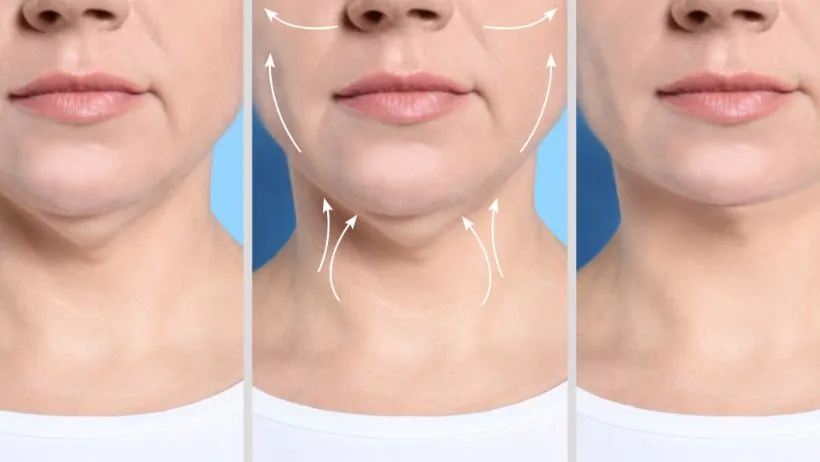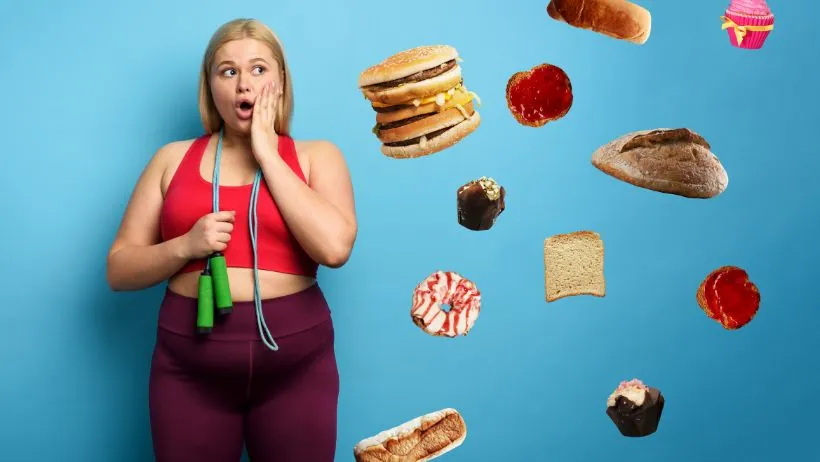Wondering how to reduce face fat? In a world obsessed with appearances, achieving a leaner face is a common goal for many individuals. While spot reduction is not a realistic approach to losing fat, there are specific techniques and lifestyle changes that can help reduce face fat.
In this comprehensive guide, we will explore the factors contributing to face fat, debunk common myths, and provide actionable strategies to achieve a more sculpted facial appearance. Let’s delve into the topic of how to reduce face fat.
Understanding Face Fat: The Science Behind It
Before delving into the methods of reducing face fat, it’s crucial to understand the science behind facial fat accumulation. Genetics, overall body fat percentage, and aging play significant roles in how fat is distributed in the face.

Facial fat can accumulate due to excess calorie intake, lack of physical activity, and even hormonal imbalances. Additionally, water retention, poor dietary choices, and inadequate sleep can contribute to facial puffiness.
Debunking Myths: Spot Reduction and Face Exercises
One of the most prevalent myths is the concept of spot reduction, the idea that you can lose fat from a specific area of your body through targeted exercises.
Unfortunately, spot reduction doesn’t work, and this section will explain why. It will also debunk the myths surrounding facial exercises, exploring their effectiveness and limitations in reducing face fat.
Adopting a Healthy Lifestyle: The Foundation of Face Fat Reduction
A holistic approach to reducing face fat begins with adopting a healthy lifestyle. This section will cover the importance of a balanced diet, focusing on whole foods, lean proteins, and essential nutrients.
It will also delve into the significance of hydration and how adequate water intake can aid in overall weight loss, including reducing facial puffiness. Moreover, the role of regular exercise, stress management, and sufficient sleep will be emphasized in achieving a leaner face. It is one of the ways on how to reduce face fat.
Strategic Caloric Deficit: Tailoring Your Diet for Face Fat Reduction
Creating a caloric deficit is essential for losing overall body fat, which includes the face. It is one of the ways on how to reduce face fat. This section will guide readers on how to calculate their daily caloric needs and create a sustainable caloric deficit through a combination of diet and exercise.

It will also discuss the importance of portion control, mindful eating, and the significance of tracking progress to stay motivated.
Cardiovascular Exercise: Burning Calories and Reducing Face Fat
Cardiovascular exercises play a crucial role in burning calories and aiding in overall fat loss. This section will explore various cardio exercises, their effectiveness in burning facial fat, and how to incorporate them into a fitness routine.
High-intensity interval training (HIIT) and its benefits in promoting fat loss will also be discussed, along with practical tips for beginners and those with physical limitations. It is one of the ways on how to reduce face fat.
Strength Training: Building Muscle to Boost Metabolism
Strength training is often overlooked in the context of face fat reduction. This section will emphasize the importance of building lean muscle mass to boost metabolism and aid in fat loss.

It is one of the ways on how to reduce face fat. It will cover different types of strength training exercises, focusing on both bodyweight and resistance training. Additionally, the concept of muscle confusion and its role in preventing plateaus will be explored.
Mind-Body Connection: Stress Management and Sleep
Chronic stress and lack of sleep can disrupt hormonal balance, leading to weight gain, including facial fat. This section will discuss the mind-body connection, exploring the impact of stress on weight and strategies for effective stress management, such as mindfulness, meditation, and yoga.
Additionally, the importance of quality sleep and its role in regulating hunger hormones and promoting overall well-being will be highlighted. It is one of the ways on how to reduce face fat.
Professional Interventions: When and How to Seek Medical Advice
For some individuals, face fat may persist despite adopting a healthy lifestyle. This section will discuss when it might be appropriate to seek professional help, exploring medical interventions such as cosmetic procedures and surgeries.
It will provide an overview of non-invasive treatments like CoolSculpting and injectables, as well as surgical options like liposuction. It is one of the ways on how to reduce face fat. Readers will gain insights into the safety, efficacy, and considerations associated with these interventions.
Cultivating Confidence and Body Positivity
Lastly, it’s essential to address the psychological aspects of body image and self-esteem. This section will discuss the importance of cultivating confidence and body positivity regardless of one’s facial appearance.
It will explore the impact of societal standards of beauty, the role of social media, and practical tips for building self-confidence. Embracing one’s unique features and celebrating individuality will be emphasized as key components of a positive self-image. It is one of the ways on how to reduce face fat.
How Does Face Fat Occurs?
Facial fat accumulation, often a source of frustration and concern, is influence by a combination of genetic, lifestyle, and aging factors. Understanding how face fat occurs is crucial for developing effective strategies to address it.
Let’s delve into the intricate factors that contribute to the accumulation of fat in the face.
1. Genetics: The Blueprint of Facial Structure
Genetics play a fundamental role in determining the overall structure of our face, including how and where our bodies store fat. If your parents or grandparents had round faces, you might be genetically predisposed to store fat in similar ways. Genetic factors influence the distribution of adipose tissue, which can lead to a fuller face or prominent cheeks.
2. Age-Related Changes: Collagen Loss and Muscle Weakening
As we age, our bodies undergo various changes that can impact the appearance of our face. One significant factor is the loss of collagen, a protein that provides elasticity and firmness to the skin. Reduced collagen levels lead to sagging skin, making underlying fat deposits more noticeable. Additionally, facial muscles may weaken with age, contributing to a less defined jawline and the appearance of facial puffiness.
3. Overall Body Fat Percentage: The Impact of Body Composition
The amount of body fat you carry affects the fat distribution throughout your body, including your face. People with higher overall body fat percentages are more likely to have excess fat in their faces. When you gain weight, your body stores excess calories as fat, and this can manifest in various parts of your body, including your cheeks and chin.
4. Hormonal Imbalances: Influencing Fat Storage
Hormones play a crucial role in regulating metabolism and fat storage. Imbalances in hormones such as cortisol (the stress hormone) and insulin (the hormone that regulates blood sugar) can lead to weight gain and fat accumulation, including in the face. Additionally, hormonal changes that occur during pregnancy or menopause can affect the way your body stores fat, potentially leading to facial fullness.
5. Water Retention: Puffiness and Swelling
Water retention, often caused by factors like excessive salt intake, dehydration, or hormonal fluctuations, can result in facial puffiness. When your body retains water, it can cause swelling in various areas of the body, including the face. This temporary condition can give the illusion of increased facial fat.
6. Unhealthy Lifestyle Choices: Diet, Exercise, and Sleep
Poor lifestyle choices significantly contribute to face fat accumulation. Diets high in processed foods, sugars, and unhealthy fats can lead to weight gain, including in the face. Lack of regular physical activity reduces the number of calories burned, making it easier for the body to store excess energy as fat. Additionally, inadequate sleep disrupts hormonal balance, increasing cravings for unhealthy foods and potentially leading to weight gain and facial puffiness. Follow The Keto Diet Meal Plan for 1 Week.
7. Dehydration: Impact on Facial Appearance
Proper hydration is essential for overall health and can also affect the appearance of your face. When your body is dehydrate, it retains more water, leading to facial puffiness and swelling. Dehydrated skin is also more prone to sagging and can make fine lines and wrinkles more noticeable.
Conclusion
Reducing face fat how to reduce face fat is a multifaceted journey that involves lifestyle changes, exercise, and, in some cases, professional interventions. By understanding the science behind facial fat accumulation and adopting a holistic approach that encompasses nutrition, exercise, stress management, and self-acceptance, individuals can work towards achieving a leaner and healthier face. Remember, every face is unique, and the focus should always be on overall health, well-being, and self-love.
